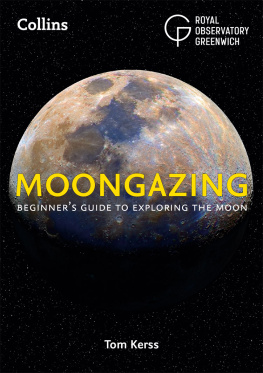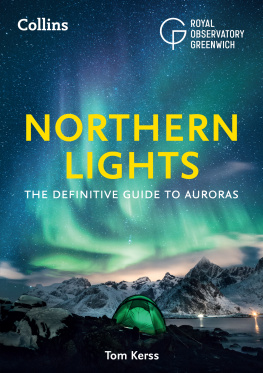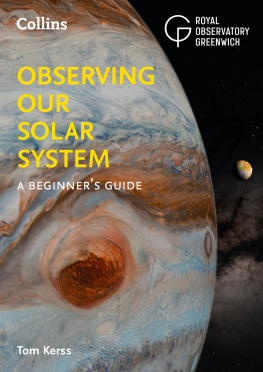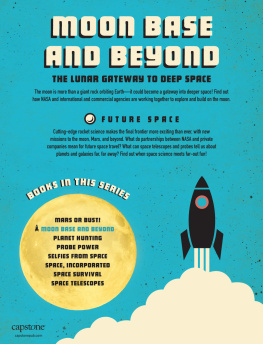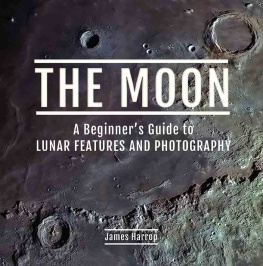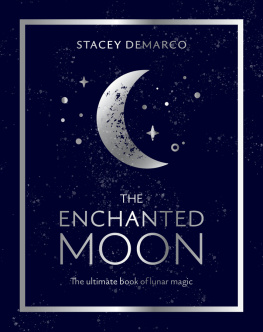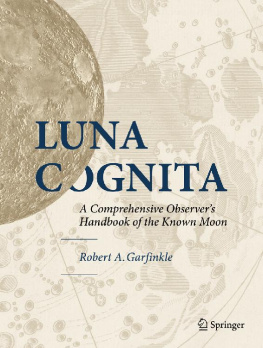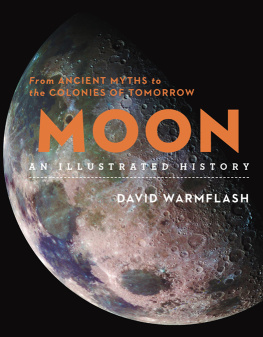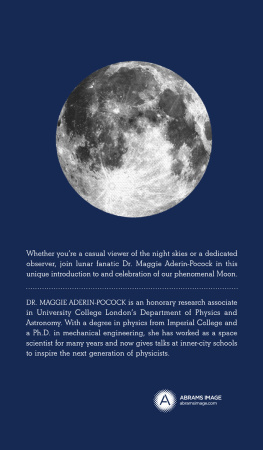
Australia
HarperCollins Publishers (Australia) Pty. Ltd.
Level 13, 201 Elizabeth Street
Sydney, NSW 2000, Australia
http://www.harpercollins.com.au
Canada
HarperCollins Canada
Bay Adelaide Centre, East Tower
22 Adelaide Street West, 41st Floor
Toronto, ON, M5H 4E3, Canada
http://www.harpercollins.ca
India
HarperCollins India
A 75, Sector 57
Noida, Uttar Pradesh 201 301, India
http://www.harpercollins.co.in
New Zealand
HarperCollins Publishers (New Zealand) Limited
P.O. Box 1
Auckland, New Zealand
http://www.harpercollins.co.nz
United Kingdom
HarperCollins Publishers Ltd.
1 London Bridge Street
London SE1 9GF
http://www.harpercollins.co.uk
United States
HarperCollins Publishers Inc.
195 Broadway
New York, NY 10007
http://www.harpercollins.com
| 4, 5 | Tom Kerss |
| 6 top | Kelvinsong CC by 3.0 |
| 6 bottom | Tom Kerss |
| 7 | Tom Kerss |
| 8 top | NASA/Goddard/Arizona State University |
| 8 bottom | HarperCollins Publishers, Earth: Antony McAuley/Shutterstock Moon: Koryaba/Shutterstock |
| 9 | HarperCollins Publishers, Earth: Antony McAuley/Shutterstock Moon: Koryaba/Shutterstock |
| 10 | HarperCollins Publishers, Sun: xfox01/Shutterstock Earth: Antony McAuley/Shutterstock Moon: Koryaba/Shutterstock |
| 11 | HarperCollins Publishers, Sun: xfox01/Shutterstock Earth: Antony McAuley/Shutterstock Moon:Koryaba/Shutterstock Moon phases: Lick Observatory |
| 1213 | NASA/GSFC/Arizona State University |
| 1415 | NASA/LRO |
| 16-19 | Image: NASA/GSFC/Arizona State University, maps Collins Bartholomew Ltd |
| 20 | Donald A. Mackenzie, Myths of Babylonia and Assyria (1915), p. 50 [1][2], Messrs. Mansell & Co. |
| 21 top left | MAX ALEXANDER/LORD EGREMONT/SCIENCE PHOTO LIBRARY |
| 21 bottom left | Galileo Galilei Apud Thomam Baglionum, Sidereus Nuncius 1610. Courtesy of the Smithsonian Libraries https://www.library.si.edu/digital-library/book/sidereusnuncius00gali |
| 21 top right | Historic Images/Alamy Stock Photo |
| 22 top left | NASA |
| 22 bottom left | NASA/JPL |
| 22 right | NASA |
| 23 | NASA |
| 24 left | NASA/GSFC/Arizona State University |
| 24 top right | NASA |
| 24 middle right | NASA/Eugene Cernan |
| 24 bottom right | NASA |
| 25 | NASA/GSFC/Arizona State University |
| 26 | NASA/ESA/T. Lombry |
| 27 top | Tom Kerss |
| 27 bottom | HarperCollins Publishers Moon: Koryaba/Shuterstock Hand with coin: Hein Nouwens/Shutterstock face: Skitale/Shutterstock Small coin: AlexanderZam/Shutterstock |
| 28 top left | photoHare/Shutterstock |
| 28 bottom left | Kapege.de/CC by SA-2.5 |
| 28 right | Trikona/Shutterstock |
| 30 | National Maritime Museum, Greenwich, London. |
| 31 top | HarperCollins Publishers, Sun: xfox01/Shutterstock Earth: Antony McAuley/Shutterstock Moon: Koryaba/Shutterstock |
| 31 bottom left | Solar eclipse from Orkney, March 2015, Mark Ferguson |
| 31 bottom right | The Diamond Ring, Melanie Thorne |
| 32 | Tuanna2010:CC by 3.0 |
| 33, 34, 35 | Tom Kerss |
| 3667 | NASA/GSFC/Arizona State University |
| 68, 69, 70, 71, 72, 73 | Tom Kerss |
| 74 left | Tom Kerss |
| 74 right | celestron.com |
| 75 | Anthony Guiller E. Urbano (www.nightskyinfocus.com) |
| 76 top | Tom Kerss |
| 76 bottom | With kind permission of the ZWO Company https://astronomy-imaging-camera.com/ |
| 77 top | With kind permission of The Imaging Source http://www.astronomycameras.com/ |
| 77 bottom | With kind permission of Farpointastro.com |
| 78 top | With kind permission of Levenhuk.com |
| 78 bottom | Astronomik/Eric-Sven Vesting https://www.astronomik.com/ |
| 79, 80, 81, 83, 84, 86, 87 | Tom Kerss |
| 88 top | Tom Kerss /NASA/LRO |
| 88 bottom | Tom Kerss |
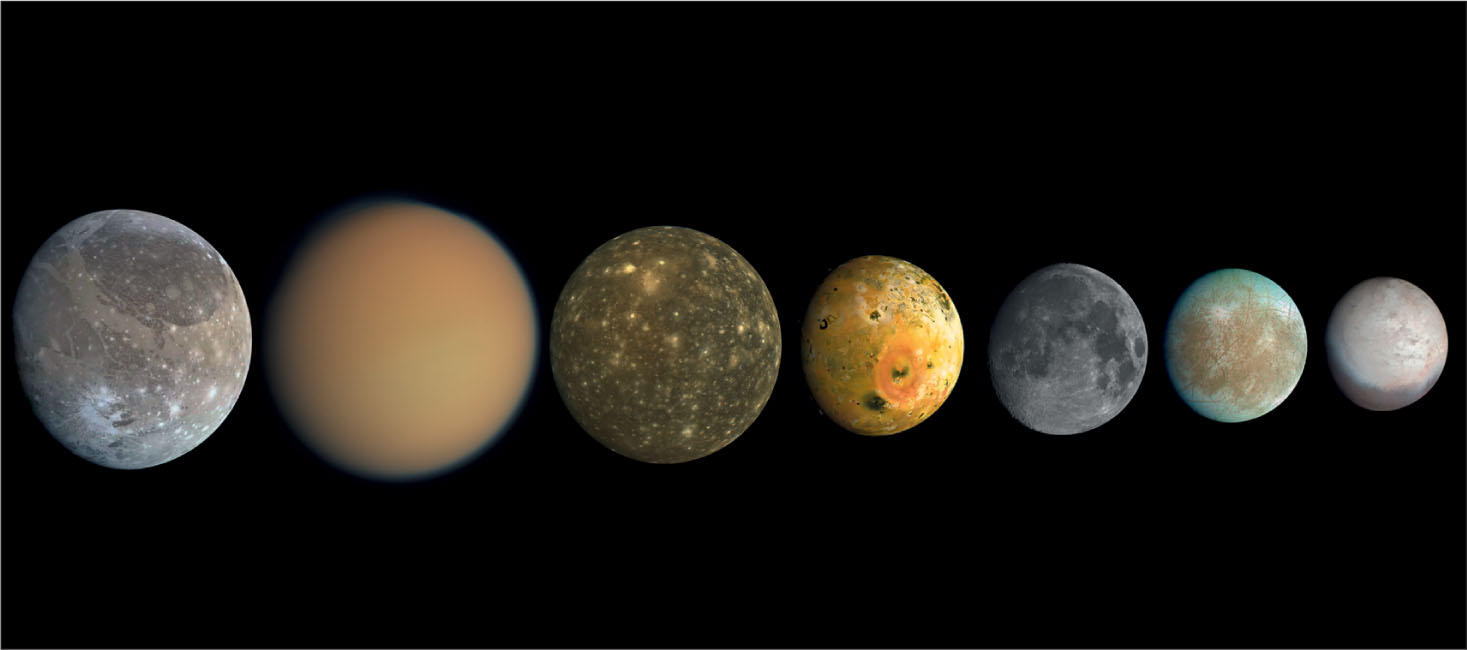
The Solar Systems largest moons. Left to right: Ganymede, Titan, Callisto, Io, Moon, Europa, Triton.
The Moon is another world, our nearest neighbour in space, and due to its close proximity and gravitational bond, a natural satellite of the Earth. To date, it is the only other world to have been visited by human beings, but its familiar face has been pondered since a time long forgotten. It was once considered a mysterious and divine signaller, but our understanding of the Moon advanced suddenly with the development of the space age, which delivered the epic and unprecedented Apollo programme.
The Moon wasnt always the way we see it today. Indeed, it wasnt always there at all. Our unmistakable natural satellite coalesced from a ring of material ejected from the Earths crust in a catastrophic collision of worlds about four billion years ago. Despite being one of hundreds of moons in the Solar System, it is unusually large for its relatively small parent world. It ranks fifth largest, after Jupiters Ganymede, Callisto and Io, and Saturns Titan, with an average diameter of 3,475 km. This makes it just a few hundred kilometres larger than the smallest of Jupiters four large satellites, Europa.
Due to it having formed much closer to the Earth than it is today, the Moon would have once loomed much larger in our skies, glowing from the intense heat of great seas of lava all over its surface. Over the aeons, it has cooled and solidified, and moved much farther away. This recession continues today, but at such a slow rate approximately 4 cm per year that it was all but undetectable until very precise measurements were made in the latter part of the twentieth century.
Like the Earth, the Moon is a differentiated body, meaning its internal structure is layered. Moonquakes have been detected using seismometers on the surface of the Moon, allowing scientists to map its density. It has a small (less than 700 km wide) core of solid and partially molten hot material, likely to be mostly iron, with a maximum temperature around 1,600C. Above this, the Moons mantle is partially molten and largely solid, with a crust of igneous material. Despite having cooled long ago, the Moons surface has been frequently reheated by large impacts, and the violent history of collisions is almost perfectly preserved on its surface today.
It has been shown using magma samples returned by Apollo astronauts that at one point in its early history, the Moon had a thin, noxious atmosphere released by volcanic activity on its primordial surface, but this was stripped away long ago by solar wind. With almost no atmosphere to speak of today, the Moons surface is not subjected to weather erosion. Impact craters, created by extremely high energy events, have been untouched for hundreds of millions or billions of years, allowing us to look back deep into time by exploring the surface.
Next page
